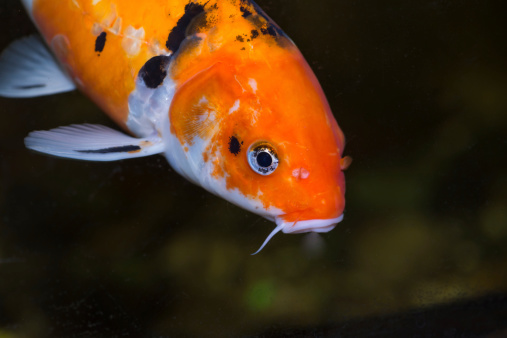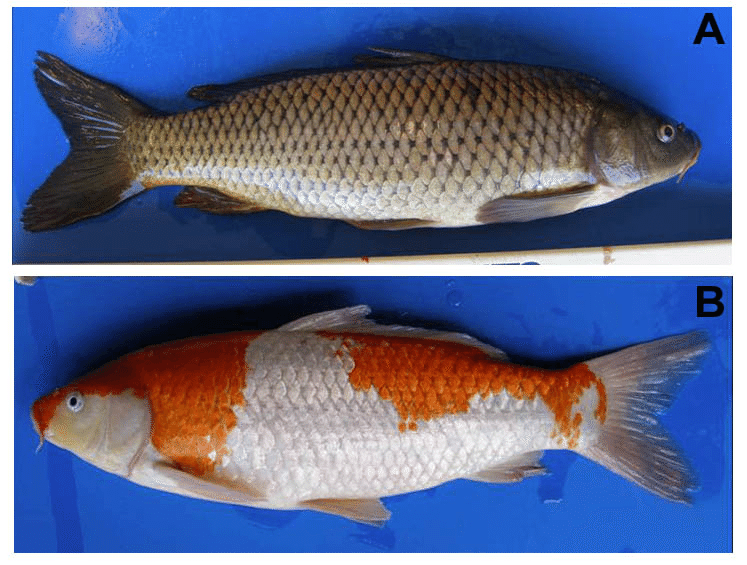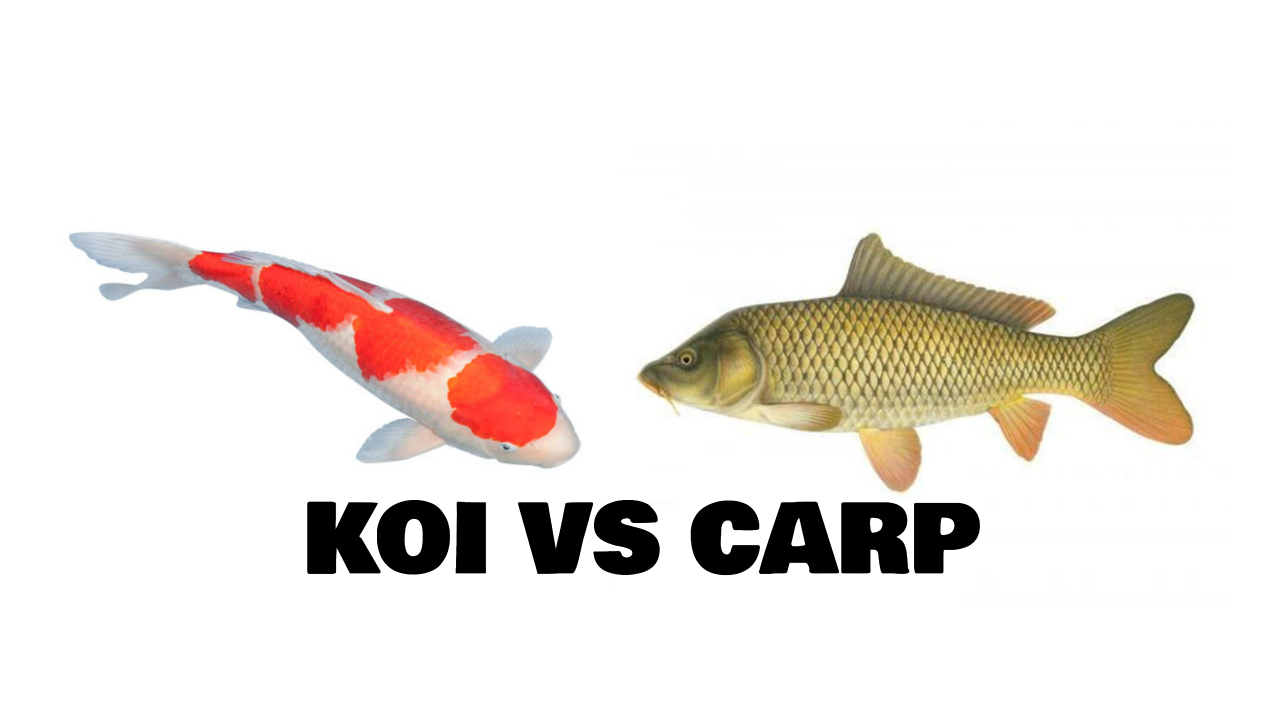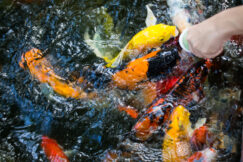It’s difficult to believe that the graceful koi fish we’ve grown to admire are descended from the common carp when you look at them. The koi are still quite similar to the common carp, despite having been carefully developed to appear the way they do now.
Color
The most noticeable distinction between koi and ordinary carp is their coloring. Koi fish are available in a wide range of colors and designs. Red, yellow, orange, black, blue, and white is some of the most prevalent koi fish colors. This is one of the reasons why they are such a popular aquarium addition.
Their brilliant colors make them a great addition to any home aquarium as a decorative element.
On the other hand, the common carp has a more neutral, deeper color that fades into a lighter color around the fins and belly.

Size
Despite their colorful and attractive appearance, koi fish may grow much larger than their carp cousins. The koi fish may reach up to 24 inches by 28 inches. On the other hand, the carp may grow to be between 15 and 27 inches long.
Carp often grow to bigger sizes than koi fish, with the world’s largest carp weighing in at 105 pounds, compared to Big Girl (the world’s largest koi) at 91 pounds. The difference isn’t significant, and the carp might seem larger despite being shorter in length.
Body type
One of the most important characteristics of carp from koi is their body form. The body form of a koi differs significantly from that of a common carp. The carp’s body is more compressed and taller than the koi fish, with more growth occurring in the middle, whereas the koi fish grows longer.
The koi fish has acquired a torpedo-like body, with a thin head and tail and a broader belly, thanks to deliberate breeding. This is the most significant distinction between carp and koi fish.

Fins
The fins of koi and carp are one of their most distinguishing features. The carp’s fins have a divided spine and an enlarged dorsal fin. Koi shed their spines as fish grew older, allowing for the elegant flowing fins seen in Butterfly koi. This is what gives their fins a magnificent and flowing appearance.
In other words, the carp has a more “basic” appearance in every way, but the koi has a more vivid, flowing, and distinctive appearance.
Scales
The scales of the koi and the common carp are the ultimate differentiator. The koi have thinner, more symmetrical, and curled scales than the common carp, thanks to selective breeding. Leather carp and leather koi are koi and carp completely devoid of scales. The scales of a koi fish are more curled, regular, smaller, brighter, and more appealing than those of a typical carp.
FAQs

How much do Koi cost on average?
Regarding pond-quality koi, the price range can be determined by various factors. Regularly, you may get them for as little as $10 or $100. The size of the koi fish determines everything.
On the other hand, show-quality fish may be a true money pit. The greatest exhibition koi in the world have been bred specifically for that reason.
Is it possible to eat both carp and koi?
Both carp and koi are fish that may be eaten. However, koi are sometimes employed only for ornamental purposes. Carp meat, on the other hand, is flaky and has no fishy odor when eaten. The murky flavor of carp, as well as its massive bones, are disliked by many individuals. Carp may surely be tasted by those who enjoy delicate flavors. It is, after all, a good source of protein.
Is there a difference in diet between carp and koi?
Carp are said to be omnivorous. Carp like natural foods such as planktonic crustaceans, tiny insects, and fish. Because of their diverse dietary habits, carp are resistant to any brait. They consume 2% of their body weight in food every day.
On a normal diet, koi like algae, tiny insects, worms, and other insects. In brait, Koi is also readily unresponsive. They’re also more attractive to tiny plants than carp. Koi may consume up to 4% of their body weight daily.
What does koi mean in English?
Koi are symbols of love and friendship in Japan because “koi” is a homophone for another word that signifies “affection” or “love” in Japanese.
Who is more profitable, carp or koi?
The contrast is relative because both contribute to the greatest possible fish economy. People don’t consume koi as much as they do various carp breeds. Carp is a short-lived fish that is difficult to move. Carp, on the other hand, require a lot of ice after being captured, or they would quickly decay.
For several hours, koi may survive without an active oxygen source. However, they will perish within minutes due to the lack of dissolved oxygen in the water. Koi are easily transportable but do not sell as well as carp in the fish market. Koi command a high market price due to their popularity as decorative fish.
Is it possible to estimate the age of a Koi fish?
When the koi fish reach maturity, it becomes a little simpler to tell them different in terms of age. The body length of a koi fish is the most important element in estimating its age. They are three years old when they reach around ten inches and are considered mature. Any koi fish shorter than 10 inches above is considered a youngster.
Conclusion
There you have it! You can now easily differentiate between a koi and a carp. Although they are from the same family line, various things make them different. These are beautiful additions to any pond or aquarium, so knowing the difference between the two is vital.




